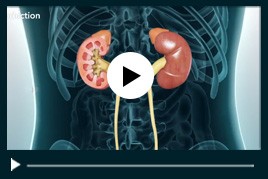Bladder Tumour Biopsy and Resection
Blood in the urine, painful and frequent urination, and low back pain are common urinary disorder symptoms that may be associated with bladder cancer. When you visit the clinic with these complaints, your doctor will order imaging tests to identify any growths or abnormalities in the bladder. However, these cannot tell if a growth is cancerous. A bladder biopsy is ordered to confirm the diagnosis of a bladder tumour, where a sample of tissue from the abnormal tissue is excised for microscopic examination.
How is a bladder tumour biopsy performed?
To perform a bladder biopsy, you will sit on a special chair in a reclined position. Your urethra (the tube that passes urine out of your body) is cleaned and an anaesthetic cream applied. A cystoscope (lighted tube with a camera) is passed through the urethra to enter your bladder. Your bladder is filled with water or saline through the cystoscope. Your doctor will view the inside of your bladder and identify areas of abnormality. Tiny instruments fitted to the cystoscope are used to obtain a sample of the abnormal tissue. The sample is sent to the lab for examination.
What do the results of a bladder biopsy show?
Bladder biopsy not only helps identify cancer cells, but also helps determine the stage and extent to which the cancer has spread. This helps in determining appropriate treatment.
How is bladder cancer resected?
Early-stage superficial bladder cancer may be removed in its entirety by transurethral resection (TUR) through the cystoscope. Any remaining cancer cells are destroyed by fulguration (burning) or the use of laser.
Invasive tumours are usually removed partially (when underlying muscle is affected) or completely (when it affects more than one part of the bladder and spreads to lymph nodes). This is known as cystectomy and is usually performed under general anaesthesia either as an open surgery through the abdominal wall or laparoscopy (through small incisions). If only a part of the bladder is removed (partial cystectomy), your bladder can still function to store urine, though it may have reduced capacity. However, when the entire bladder is removed, a part of your intestine may be used to act as a passageway or temporary storage for urine which is either passed out through an opening in your abdominal wall or redirected to your urethra.

 Menu
Menu




